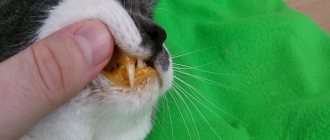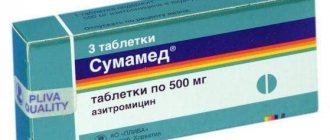If your cat is stressed a lot, she may develop idiopathic cystitis. The disease is accompanied by a frequent urge to urinate, the appearance of blood in the urine, pain in the kidney area, and fever. At the first symptoms, the owner is recommended to show the animal to a veterinarian, who will make a diagnosis, prescribe treatment and give preventive recommendations. The prognosis depends on the timeliness of therapy.
New: for cats suffering from this disease, veterinarians have developed the drug Cystophan, which restores the glycosaminoglycan layer and helps the animal cope with stress.
Reasons for the development of pathology
The disease has a predominantly non-infectious etiology and occurs as a result of stressful situations. It is considered normal when the walls of the organ are protected by a glycosaminoglycan layer, which prevents the development of pathogenic microflora. In a state of stress, the hormonal balance is disrupted, which leads to a weakening of the protection of the epithelium of the organ and cystospasm occurs - bladder neurosis, accompanied by frequent and painful urine discharge. The main causes of idiopathic cystitis (ICC) are the following factors:
- incorrectly selected diet;
- chemical additives in drinking water;
- surgical intervention;
- injury;
- sand and kidney stones;
- abnormal development of the urinary tract organs.
Who is at risk?
The disease can be triggered by obesity.
Idiopathic cystitis is most often diagnosed in shy individuals. And also for those in whose life the following factors are present:
- excess body weight;
- sedentary lifestyle;
- insufficient water intake;
- inability to hunt, frolic;
- regular fights with relatives;
- frequent noisy company with the owners, loud music;
- moving to a new place, temporary stay in a pet hotel.
Controversies in the treatment of feline urethral obstruction. Part 3.
Journal of Veterinary Emergency and Critical Care
Volume 25, Issue 1, pages 130–137, January/February 2015
- Edward S. Cooper VMD, MS, DACVECC*
Information about the author:
- Department of Veterinary Clinical Sciences, The Ohio State University, Columbus, OH
Translation from English: veterinarian Vasiliev
AB
- Controversies in the treatment of feline urethral obstruction.
- Controversies in the treatment of feline urethral obstruction. Part 2.
Use of antimicrobials
Another source of varying clinical opinion is the use of antimicrobial agents.
Most often, antimicrobial drugs are prescribed in a clinical setting, both to treat a suspected urinary tract infection and to prevent the development of one from the placement of a catheter in the urethra. In other cases, patients with urethral obstruction are routinely given antimicrobial treatment at home, assuming that the urinary tract infection is due to catheterization. Given the side effects of overuse of antimicrobials and the development of resistant bacterial flora, the question arises whether such treatment regimens are necessary in the standard treatment of urethral obstruction.
The incidence of bacterial urinary tract infection in cats is traditionally thought to be very low (<2%), although newer studies suggest a higher incidence of bacteriuria, ranging from 12% to 40%. [10],[24,25] Further, it is well documented that antimicrobials in both cats and dogs do not prevent the development of urinary tract infections caused by urinary catheter insertion. [26-28]
A recent prospective study specifically in patients with urethral obstruction found no positive cultures during initial evaluation, but 6/18 cats (33%) developed urinary tract infections after catheterization.[29] Three of them had positive cultures after 24 hours, and the remaining ones after 48 hours. Isolates included Staphylococcus species (3), Escherichia coli (2), and Streptococcus bovis (1).
Another recently completed study of 31 cats also showed no positive cultures at initial presentation and found a positive culture rate of only 4/31 (13%) (Streptoccus species [3], Pasteurella species [1]).[30] All 4 positive cultures were observed when samples were taken at 24 hours. In both of these studies, catheter placement was performed using an aseptic technique (eg, sterile gloves, instruments, consumables), which may contribute to the lower incidence of acquired urinary tract infection. Given the findings of these and other studies, cats with urethral obstruction are unlikely to have a urinary tract infection on presentation, making obtaining a urine culture or initiating antimicrobial therapy at the start of treatment unlikely necessary. A notable exception to this may be cats with urethral obstruction that have recently been catheterized for a previous episode.
Symptoms: how does the disease manifest itself?
Idiopathic cystitis in cats does not last long - 3-5 days. The animal constantly licks the abdomen and genital area to reduce pain. Main features:
- stiffness when moving;
- change in urine color, blood;
- pain during urine passage;
- frequent urination, often anywhere in the room;
- long sitting on the tray for 20-30 minutes;
- scanty urine output;
- refusal to eat;
- temperature increase;
- vomit;
- diarrhea;
- lethargy, reluctance to play;
- dull and unkempt fur.
Oral administration of drugs
Oral administration of drugs is the administration of a drug orally through the mouth (per os). This method of administration is the simplest and most common way of taking medications.
ADVANTAGES:
- Simple and easy to use.
The owner of the animal can independently administer medications to his pets prescribed by a veterinarian.
- A diverse range of dosage forms.
For internal use, medications are produced in the form of pills, dragees, tablets, powders, capsules, microcapsules, suspensions, syrups, solutions, emulsions, infusions.
- Indispensable in cases where a direct effect on the digestive tract is required.
Taking antacid medications – for the treatment of gastric or duodenal ulcers; the use of enzymatic preparations - in case of impaired secretion of the digestive glands, enveloping agents for gastritis and peptic ulcers.
FLAWS:
- Not suitable for emergency treatment.
The effect of the drug develops in approximately 20–40 minutes, since the administered drug is absorbed for a long time and only then enters the bloodstream.
- There are some difficulties in creating and maintaining a certain concentration of a drug in the blood.
Part of the drug is destroyed in the digestive tract or liver of the animal.
- Some drugs cause significant irritation of the digestive tract.
- Practically ineffective for certain species of animals.
Cats have bitter, salty, sour, tart, etc. causes increased salivation (salivation), due to which part of the drug comes out.
The medicine is administered by holding the upper jaw with one hand, opening the animal's mouth with the other and placing the tablet on the root of the tongue, then closing the jaws. Then with a syringe or NEEDLESS
water is poured into the cheek (between the canines and premolars) with a syringe to activate swallowing movements and better passage of the medicine through the esophagus.
Tablet forms of drugs, if given without water, can stick to the wall of the pharynx or esophagus, causing necrosis of the mucous membrane in this place.
The powder is poured onto the animal’s tongue and after a few minutes is given to drink.
Before giving liquid medicines: suspensions, syrups, solutions, emulsions, infusions, the animal’s head is raised up and the medicine is poured into the cheek, waiting for the swallowing movement.
Some
The medications can be mixed with your pet’s favorite treat. However, this method is not suitable for all medications, since some substances of the drug, when interacting with food, become little or not at all active. In addition, mixing medicine into food can lead to incorrect dosage, since a sick animal may not eat enough. Some animals, in particular cats and rodents, are very selective in their habits and may completely refuse to eat or drink if they feel a change in the taste of food or water.
Chinchillas, being inquisitive, tend to take pills hidden in raisins.
Sometimes veterinarians need to prescribe medications. If the pet is light, then a small part of the tablet is prescribed, for example 1/20, 1/50, etc. The owners have a question: how to give such a dose? It is simply unrealistic to separate it dry.
In the event that the tablet cannot be divided into parts determined by the dose, it should be dissolved with water and your pet should be given the required amount, which is calculated by YOUR DOCTOR.
Such drugs are given to animals WITHOUT NEEDLES
syringe. The veterinarian, when prescribing the drug, will tell you its dose and frequency, and explain how and at what time of day it should be used for the best therapeutic or preventive effect.
The owner is required to understand and understand the doctor’s explanations and carry out the appointments pedantically; if you have questions, you can call the clinic, where they will answer all your questions.
Diagnostic measures
To determine an accurate diagnosis, laboratory diagnostics are needed.
Stress cystitis in cats is determined by a veterinarian by palpation of the abdomen and kidney area. To accurately establish a diagnosis, diagnostic methods are prescribed, such as:
- urine test;
- radiography;
- Ultrasound of the kidneys;
- urethrocystoscopy if necessary.
How is the treatment carried out?
The treatment regimen is determined by the doctor; self-medication is unacceptable. The antiemetic drug "Sereniya" for cats with cystitis is prescribed with caution, as it has side effects in the form of an allergic reaction. Urinary incontinence due to nervous overstrain can be cured using the following methods:
- Surgical intervention. Performed if stones are found in the bladder.
- Use of medications. For ICC, the following are effective: antispasmodics - “Papaverine”, “Drotaverine”;
- adrenergic blockers - Prazosin, Terazosin;
- analgesics - Methoxicam, Butorphanol.
A balanced diet is an important part of therapy.
- Pheromones. Analogues of the secretion of external glands, which ensure communication between animals at the chemical level. You can use the drug "Feliway".
- Medicinal food. For kidney disease caused by stress, special foods “Royal Canin Calm” or “Hills Feline Urinary Stress” are recommended.
- Herbal decoctions. To relieve symptoms, decoctions of goldenseal, calendula, and chamomile are recommended.
- Environment. A sick animal should be provided with warmth and peace, avoiding noisy parties, repairs and other activities that irritate the animal.
Characteristics of the drug
Older cats often have problems emptying their bladder. Animals that eat only economy-class dry food every day are also at risk. Such cats often suffer from kidney, liver and stomach diseases. Some owners buy cheap food without even suspecting that their pets may get sick.
© shutterstock
To help the owner correct the problem, veterinarians recommend giving the cat Kornam. The international name of the drug is Terazosin, and in pharmacies it is sold under the name Kornam. Available in tablet form. There are two types of tablets, depending on the volume of the active substance.
Dosage Types:
- tablets of 2 mg are yellow in color, flat round in shape with a chamfer, on one side there is a score that allows you to divide the dragee into two equal parts;
- 5 mg tablets are orange-yellow in color and the same shape.
The main active component is terazosin dihydrate hydrochloride.
Prognosis and prevention
To prevent the cat from getting nervous, when moving to a new place, you can put the animal into medicated sleep, and upon arrival, help it adapt.
If treatment was started in a timely manner, idiopathic cystitis goes away quickly and does not cause much damage to the cat’s health. When a secondary infection occurs or kidney stones are detected, the prognosis depends on the severity of the disease, age and immune status. To prevent the disease from developing, it is recommended to limit the animal from nervous tension. A shy cat should be protected from contact with its relatives, and at the same time play with it more so that it moves and does not gain excess weight. It is recommended to treat all concomitant diseases of the urinary system in a timely manner.
Chronic kidney disease in cats. Semintra
Chronic kidney disease (CKD) is one of the most common and insidious diseases, affecting 10% of all cats and 35% of older cats. Signs of CKD often appear when kidney function is lost by 50% or more. An annual examination, especially in cats over 7 years of age, to assess kidney function will help detect asymptomatic CKD and prolong your pet's life.
Kidney dysfunction is a progressive disease, but the rate at which the disease progresses varies from cat to cat. The sooner a diagnosis is made and treatment is started, the better the veterinarian will be able to help your pet.
Symptoms of chronic cat disease:
- weight loss
- loss of appetite
- thirst
- frequent/lack of urination
- unpleasant odor from the mouth
- cloudy urine, bloody urine
- weakness
- drowsiness
- apathy
None of the symptoms directly indicate impaired renal function, so if one or more of them appears, you should contact your veterinarian for research and an accurate diagnosis.
Diagnosis of CKD in cats includes:
- blood chemistry
- Analysis of urine
- blood pressure check
- X-ray/ultrasound of kidneys
- calculation of renal concentrating function
As a rule, with chronic kidney disease there is an increase in the level of creatinine and urea in the blood and protein in the urine, and sediment appears in the urine.
Treatment of CKD in cats:
- Drinking regime.
Chronic kidney disease often causes dehydration, so it is important that your cat always has access to fresh drinking water. We recommend that you place several bowls of water around the house and add water to the food.
- Diet.
Special foods with low protein and phosphate content will help reduce the load on the kidneys and the entire body.
- Taking medications.
Prescribed medications normalize blood pressure, restore metabolic processes, and slow down the progression of the disease. One of the prescribed medications may be Semintra.
What is Semintra and how does it work?
Semintra is a drug developed specifically for the treatment of chronic kidney disease in cats. It is an oral suspension and is very convenient to use. It contains telmisartan, which is aimed at combating proteinuria. Seminatra is the first and only veterinary drug in the world that helps reduce the amount of protein lost by a cat, and thereby increase the life of your pet.
What is the dosage for treatment with Semintra?
The drug is prescribed to cats from 6 months of age once a day. The dose is 0.25 ml/kg or 1 mg of telmisartan per 1 kg of cat’s body weight. A convenient syringe will help you easily take out the right amount of medicine.
How to give Semintra solution?
Since the drug is simple and easy to use, taking it should not be difficult. 91% of cats calmly swallow a solution administered into their mouth from a syringe. You can also mix Semintra with a small amount of food.
How quickly does Semintra take effect?
It has been clinically proven that after 7 days, the concentration of protein in the urine will begin to decrease.
What to do if you miss an appointment?
If you forget to give your cat a dose of Semintra solution, there is no need to increase it at the next dose or give the drug more often. Just give the next dose at the usual time.
Does Semintra have side effects?
Like all certified veterinary drugs, Semintra has been thoroughly tested for safety and effectiveness. Side effects associated with use are rare. However, if your cat experiences any symptoms of concern while taking Semintra, contact your veterinarian.
What will my cat's life be like while taking Semintra?
A cat with chronic kidney disease will have to take medication for the rest of its life, but many cats live happily for many years after diagnosis. At the same time, the treatment will not disrupt your relationship with the purr, because the suspension is comfortable to use.











